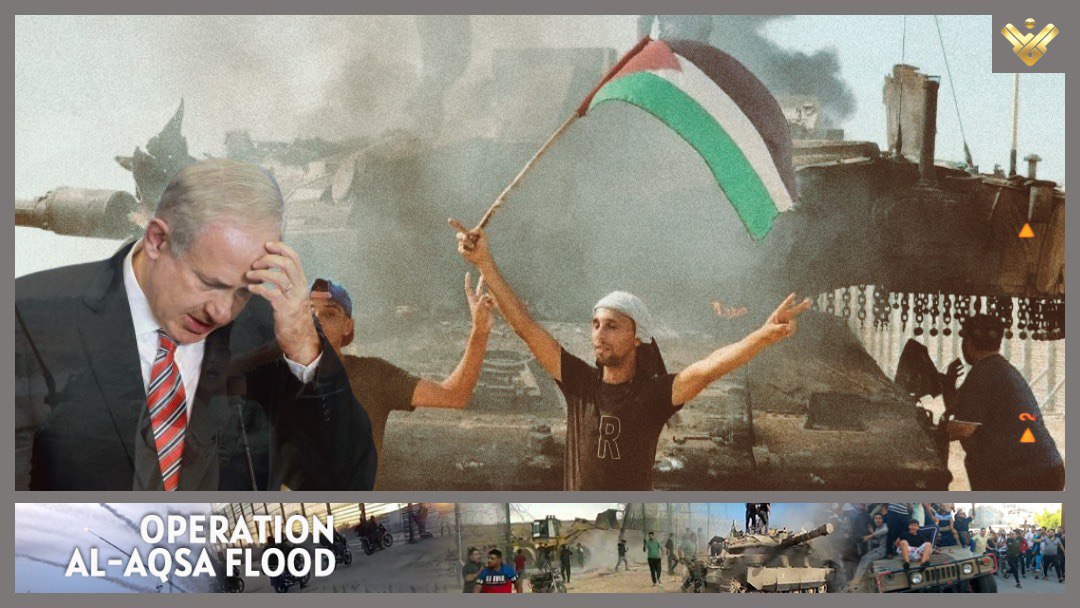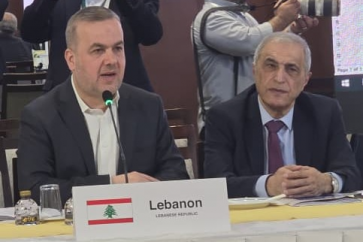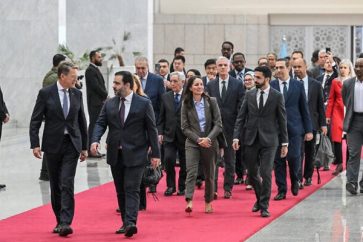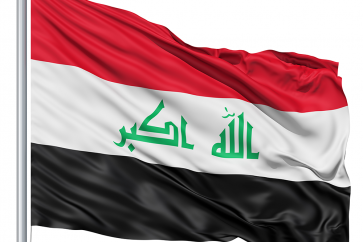The incidents that seemed inconceivable to both friend and foe have now become a grim reality in the course of the Arab-Israeli conflict.
The situation has evolved beyond Israel’s unacknowledged defeat, with Israeli commanders seeking international attention for a significant criminal operation they plan to undertake in the Gaza Strip and other parts of Palestine. That is, not only for vengeance but also to erase the operational, psychological, and political consequences of the Operations Al-Aqsa Flood.
The Israeli entity’s challenge lies in the fact that the option for large-scale operations is no longer solely within its control. This is evident in the ongoing communications between Tel Aviv and Washington on one hand and discussions held among the leaders of the Axis of Resistance on the other.
Until Sunday evening, the Palestinian resistance factions, led by Hamas, had refrained from engaging with mediators. Their message to these mediators was clear: “Stop the brutal Israeli assault on the Gaza Strip, and then we can consider talks.”
Tel Aviv Seeking All-Type Aid
On the other hand, Benjamin Netanyahu’s government appears incapable of pursuing a swift resolution. The pressure on Netanyahu’s government is not just a result of the recent defeat witnessed by the world. It also stems from Zionist military commanders’ efforts to restore their image and anticipation of a comprehensive evaluation that could lead to the removal of top military and security leaders.
Some government factions argue that ‘Israel’ must cease all forms of mediation with resistance forces and deliver a harsh blow to resistance leaders, members, and the population. There is also indirect pressure from Israel’s allies among Palestinians and Arabs, who fear the ramifications of the Israeli Defense Forces’ collapse on all their open relations with the enemy.
Tel Aviv has refrained from discussing its contemplated response strategy in detail. It has adopted a rhetoric similar to that of US and Western leaders following the September 11 attacks, emphasizing an unrestricted response with no room for questioning the causes.
The Israeli entity has also requested immediate financial support to compensate for economic losses sustained during the war as well as assistance with specialized ammunition and missiles. It has also asked the United States to provide air force aid in case of an escalation and potential strikes on its military airports.
US Won’t Fund
While Washington has shown solidarity with ‘Israel’ by deploying an aircraft carrier and facilitating the transfer of military aid to stabilize the Israeli Occupation Forces (IOF), it has expressed reluctance to send forces directly to ‘Israel’. US officials have conveyed their concerns about the potential costs and ineffectiveness of a large-scale military action, which could ignite a regional war.
Washington has also urged Jordan to take measures to ensure Israeli security and requested Egypt to tighten the blockade on the Gaza Strip. In addition, it has sent messages to Lebanon, emphasizing Israel’s reluctance to engage in a war with Lebanon but urging restraint on Hezbollah’s part to prevent any military actions in support of the Palestinians.
“Massive columns of tanks and troop carriers marched towards Palestine’s northern border.”
US to Avoid Hezbollah’s Engagement
As tens of thousands of reserve soldiers from all units of the Israeli occupation army are mobilized, and tanks line the border with Lebanon, there is heightened vigilance along the Lebanese-Palestinian border and the Lebanese-Palestinian-Syrian triangle in the Shebaa Farms area and Kfarshouba Hills. U.S. Secretary of State Anthony Blinken stated that every effort is being made to avoid the engagement of another front in the conflict, including Hezbollah in Lebanon.
In the same context, War Minister Yoav Galant ordered that villages along the northern border be evacuated to a depth of 10 kilometers. Residents in the Upper Galilee and the region northeast of Haifa shared footage of columns of tanks and troop carriers heading towards Palestine’s northern border, where a huge number of soldiers were positioned.
Axis of Resistance on Standby
Sources reported to Al-Akhbar newspaper that coordination among the Axis of Resistance forces has intensified in the last 24 hours. It also added that the Palestinian resistance forces affirm that clashes between their forces and the occupation forces within the settlements are still ongoing, with fighters operating in targeted areas and pursuing capture operations.
The resistance forces, according to the source, are closely assessing the situation and estimating the potential scale of the expected Israeli attack, considering Israel’s declaration of war. This comes as ‘Israel’ mobilizes its reserve forces, and the domestic front prepares for a state of war by suspending work and education and strengthening shelters in various regions.
Regarding the possibility of expanding the conflict to other fronts, Hezbollah’s operation in the occupied Shebaa Farms serves as a warning. The Israeli occupation army views it as an operational response that rejects Western mediation and disregards all threats. The Islamic Resistance in Lebanon issued a broad alert, leading to confusion among Israeli soldiers and settlers, resulting in accidental shootings in the Shtola settlement across from Aita Al-Shaab village.
Axis of Resistance Sets Redlines
The Axis of Resistance forces have established a clear red line that, if crossed under any circumstances, would trigger widespread escalation.
This forces ‘Israel’ to consider plans beyond its initial response to the Gaza Strip. Netanyahu’s goals, announced just days ago, include destroying the capabilities of the resistance, eliminating its leadership, and displacing Gaza residents under the pretext of protecting them from the forthcoming military operations.
Unprecedented Palestinian Achievements
On the ground, Hamas sources informed Al-Akhbar that it has intensified its presence inside the Gaza envelope, raising the number of battlefronts and strengthening its soldiers. Elite units have conducted operations and ambushes, inflicting additional casualties on the enemy. There are plans to continue positioning their forces within the region and expanding into new areas as the conflict unfolds.
Rocket attacks have targeted vital enemy infrastructure, including civilian airports, train stations, and power plants. Enemy casualties, including soldiers and settlers, are believed to be approaching a thousand, with over 130 prisoners held by resistance factions, primarily from the Gaza Force. The Islamic Jihad movement also confirmed that it currently holds approximately 30 Israeli detainees.
*Haitham Al-Moussawi wrote this article (translated and edited by Al-Manar) for the Lebanese daily Al-Akhbar (published on Monday, October 09, 2023).
Source: Al-Akhbar Newspaper (Translated and edited by Al-Manar English Website Staff)




